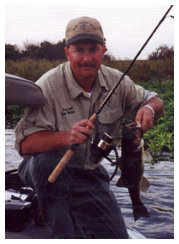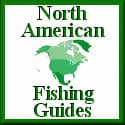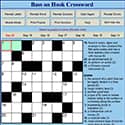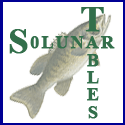Bass on Hook is Supported by our readers.
As an Amazon Associate We earn commissions from qualifying purchases with no extra cost to you.
For more informtion read our Amazon Affiliate Disclosure and Affiliate Disclosure Policies.
Pro Staff Question - How Do I Use A Titanium Spinnerbait Effectively In A Weedy Pond
Charles "The Bass Doctor" Stuart's Answer

Spinnerbaits have a variety of uses in any body of water, however in a pond with heavy weed growth, I tend to look for some different approaches to catch bass.
My Two Favorite Approaches For Fishy Weedy Bodies Of Water
1. Topwater rats, frogs and large worms or lizards.
Fish these with heavy line over the top of the weeds, stopping for 30 or more seconds before slowly moving the lure again.
Always pause near openings in the weeds.
When the fish strikes it may miss the bait the first time, so cast back and stop at the same area.
When the fish takes the lure, DO NOT STRIKE.
Wait until you feel the fish swimming with the lure , then set the hook with a single upward motion.
2. Texas Rigging.
I like this approach in heavy cover.
Flip the edges first with a worm or crawfish imitation, slowly lowering the rod tip as the bait enters the water to slow down the presentation.
Once you have fished the edges, move into the weeds and "flip the pockets" or holes in the weeds.
Strong line and a good hook set is needed.
Tight Lines!
Charles "The Bass Doctor" Stuart
BassonHook Pro Staff
Dennis "The Fishin Professor" Bryant's Answer

For the majority of 'pond-fishing' spinnerbait applications there are two basic fundamentals to keep in mind:
1. Smaller is better!
2. Slower is best!
Down-size your current spinnerbait to no larger than a ¼ oz. size, ⅛ oz. is the best choice for smaller ponds (less than 10 surface acres).
Maintain a retrieval rate only fast enough to keep the blade revolving and the lure running between 6" to 8" below the surface, rod-tip at about a 45 degree angle to the water.
My Preferences Of Spinnerbaits To Use In Weedy Ponds
Personally I prefer using a very-slightly modified (pinched-down blade-shaft), "ZAP Lures" 'Custom-Style' ⅛ oz. long-arm spinnerbait on any/all smaller or heavily fished waters.
I prefer a single #3 deep-cupped Colorado blade, on a thin-wire (.027 Stainless spring-steel) frame and dressed-up using a very-bulky, 120-tail, 'living-rubber' skirt.
If you use any titanium shaft spinnerbait, the standard .029 'ti'-shaft is more than sufficiently limber but is impossible to modify by pinching the blade-arm any closer to the hook for a slower retrieval.
I've also had an awful lot of luck fishing small ponds, using a very-small (2 inch), single-treble, undressed (plain-no-skirt), cream colored (or ivory if you can't find cream) popper, fished so darned slow that it even makes me nervous watching it work!
How To Fish A Popper In A Weedy Pond
Make your 1st (SOFT) cast to a point just beyond your intended target.
Let the lure sit untouched until the last remaining semblance of a ripple has totally left the pond (long enough to sit down, open a can of soda and take two or three LONG cool sips).
ONLY THEN, TWITCH the popper 2 quick shakes, making it remain in place or move only a VERY LITTLE bit.
Then let it sit again, until every ripple has left the pond.
Repeat this at least two more times with the same long delays as the first 'Twitch'.
The Bass can't stand it!
And the 'heart-attack' type surface-strikes it brings are more fun than winning the state lottery!
Good Fishin'!
Dennis Bryant
The Fishin' Professor!
Leo Watson's Answer

First thing to consider would be the how far below the surface the top of the submergent vegetation is.
Once this is established you can determine what weight of spinnerbait will be best suited for your needs.
The next consideration would be blade style and size.
Technics For Fishing Spinnerbaits In Weedy Ponds
For fishing vegetation I like to use a willow leaf style blade.
It comes through the weeds easier and fouls less.
As far as blade size goes I let the size of the primary baitfish determine my blade size.
In clear water with clear skies I use nickel colored blades.
In clear water with cloudy skies as a rule of thumb I use the gold colored blades.
In respect to what retrieve to use, I start out just trying to tick the top of the grass with the spinnerbait.
You will have to experiment with various retrieves and let the fish tell you what they like best.
In reference to another bait to try in that situation I would rely on one of my favorite baits the floating worm.
For that lure try the different colors available and for the technique try to imitate a snake coming through the water.
As always if you have any more questions just forward them through this fine web site.
Thank you,
Leo Watson










